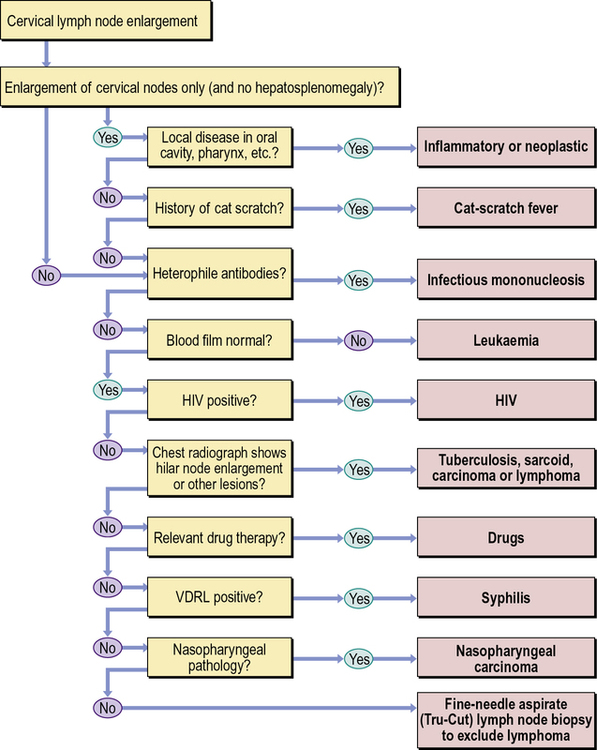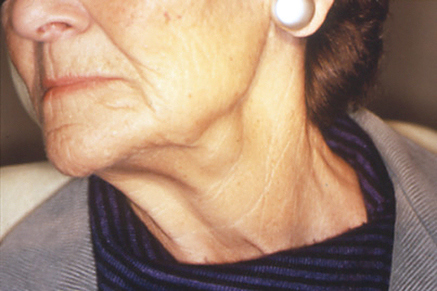Cervical lymphadenopathy
INTRODUCTION
More diffuse swelling of the neck may be caused by obesity or:
The location of a lump or swelling in the neck will often give a good indication of the tissue of origin, and the age of the patient may also help suggest the most likely diagnoses (Box 6.1). The duration of the lesion is also relevant: one that has been present since an early age is likely to be of congenital origin, while a lump appearing in later life and persisting may be malignant.
Although a wide range of diseases may present with lesions in the neck (Fig. 6.1), the most common complaint is of swelling and/or pain in the cervical lymph nodes (Box 6.2, Algorithm 6.1). This chapter concentrates on these. Over a quarter of the lymph nodes in the body are connected with lymph nodes situated in the head and the neck. The tonsil is lymphoid tissue located between the pillars of the fauces, and there is similar material in the posterior third of the tongue (lingual tonsil) and the posterior wall of the pharynx (adenoids). These three areas form a ring of lymphoid tissue around the oropharynx (Waldeyer ring). It is not surprising then, that many diseases of the lymphoid tissue present primarily in the head and neck.

Stay updated, free dental videos. Join our Telegram channel

VIDEdental - Online dental courses





































